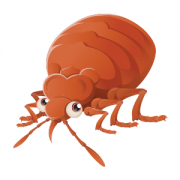Bed Bugs 101
 There is a lot of mystery surrounding bed bugs in the public eye. Not everyone reacts to bites the same way, it is difficult to get rid of them and there is a lot of misinformation out there. It is important to understand what bed bugs look like, how to prevent infestations, how to recognize infestations and to know when to call a professional service.
There is a lot of mystery surrounding bed bugs in the public eye. Not everyone reacts to bites the same way, it is difficult to get rid of them and there is a lot of misinformation out there. It is important to understand what bed bugs look like, how to prevent infestations, how to recognize infestations and to know when to call a professional service.
Bedbugs are flat, round and reddish brown, around a quarter-inch (7 millimeters) in length. The ones that typically plague humans are the common bedbug Cimex lectularius and the tropical bedbug Cimex hemipterus.
A few decades ago, bedbugs were somewhat of a novelty in developed countries. But since the early 2000s, infestations have become more common in places like the United States, Canada, the United Kingdom and Europe, according to the U.S. Centers for Disease Control and Prevention (CDC). A 2013 study in the journal Nature Scientific Reports suggested that bedbugs have evolved ways to resist insecticides.
The creatures don’t have wings and they can’t fly or jump. But their narrow body shape and ability to live for months without food make them ready stowaways and squatters. Bedbugs can easily hide in the seams and folds of luggage, bags and clothes. They also take shelter behind wallpaper and inside bedding, box springs and furniture. The ones that feed on people can crawl more than 100 feet (30 meters) in a night, but typically creep to within 8 feet (2.4 m) of the spot its human hosts sleep, according to the CDC.
Bedbugs reproduce by a gruesome strategy appropriately named “traumatic insemination,” in which the male stabs the female’s abdomen and injects sperm into the wound. During their life cycle, females can lay more than 200 eggs, which hatch and go through five immature “nymph” stages before reaching their adult form, molting after each phase. [Infographic: Bedbugs: The Life of a Mini-Monster]
Read more at: http://bit.ly/1KpJLp1



